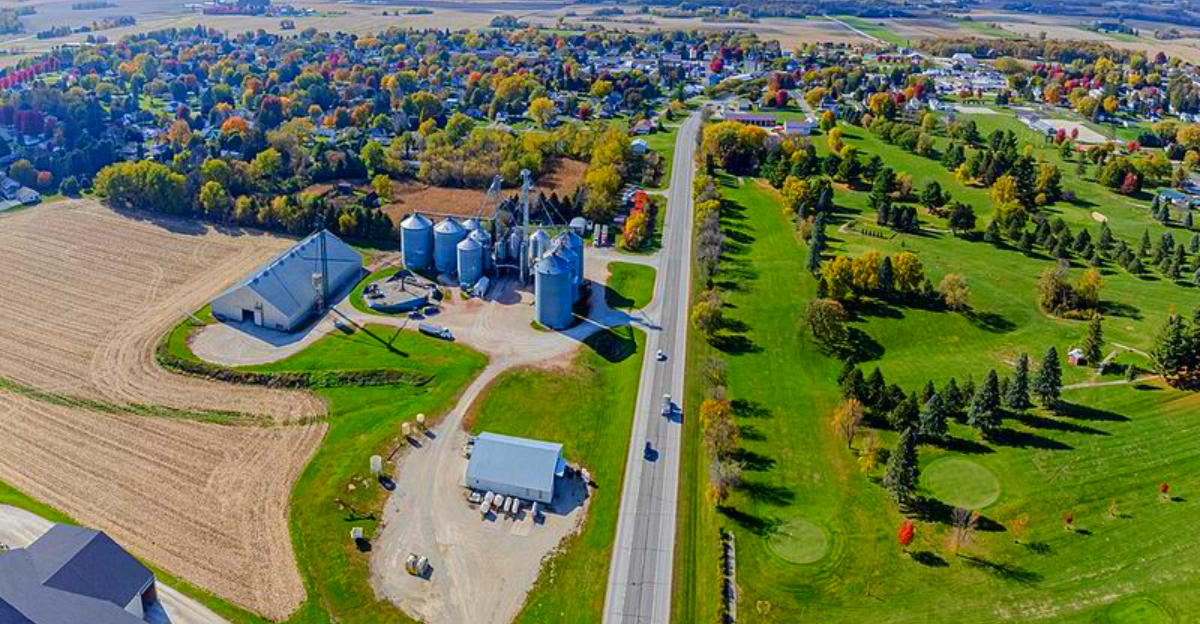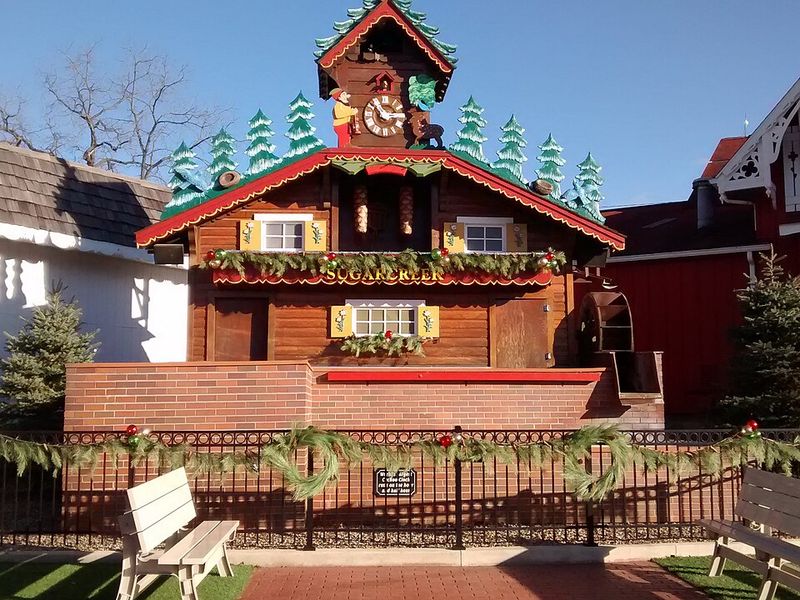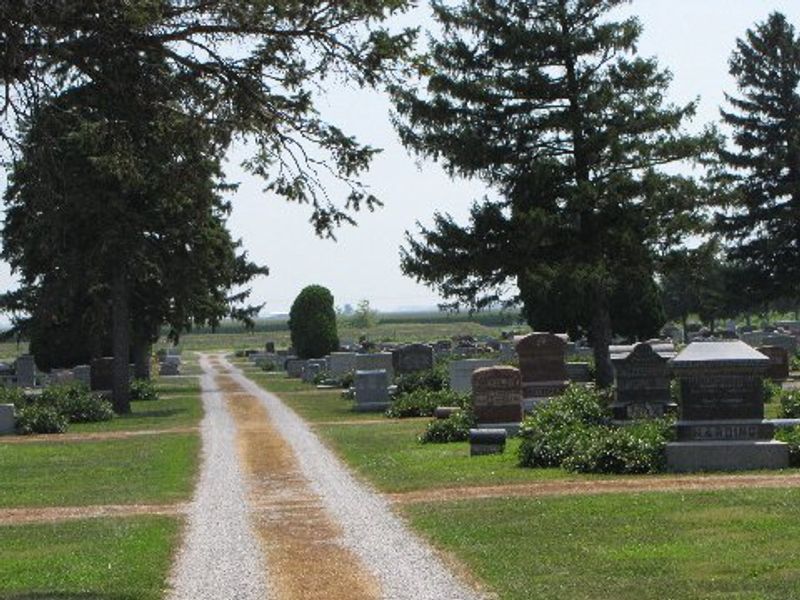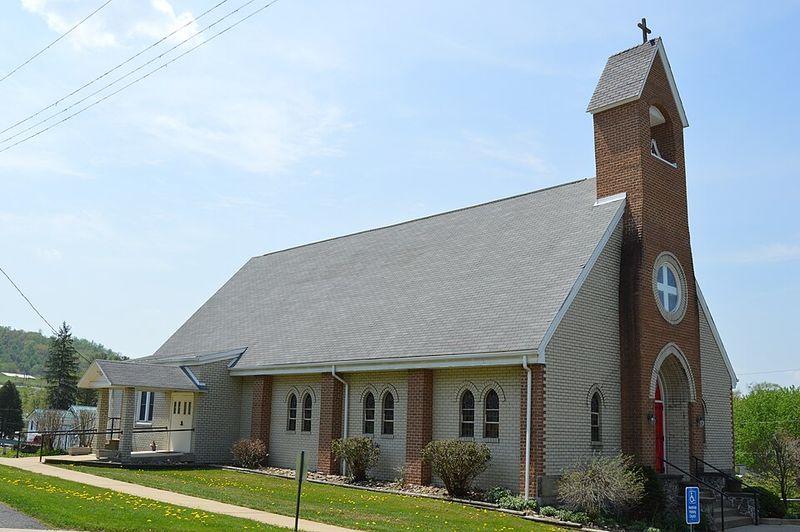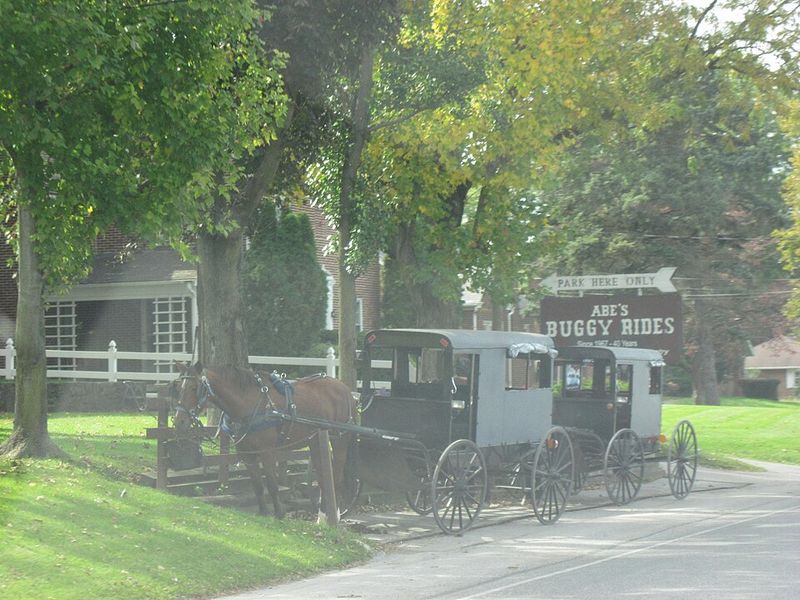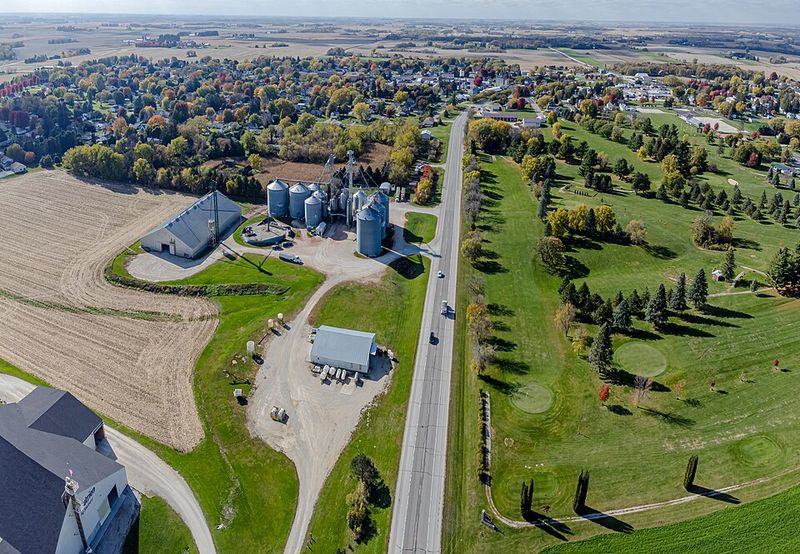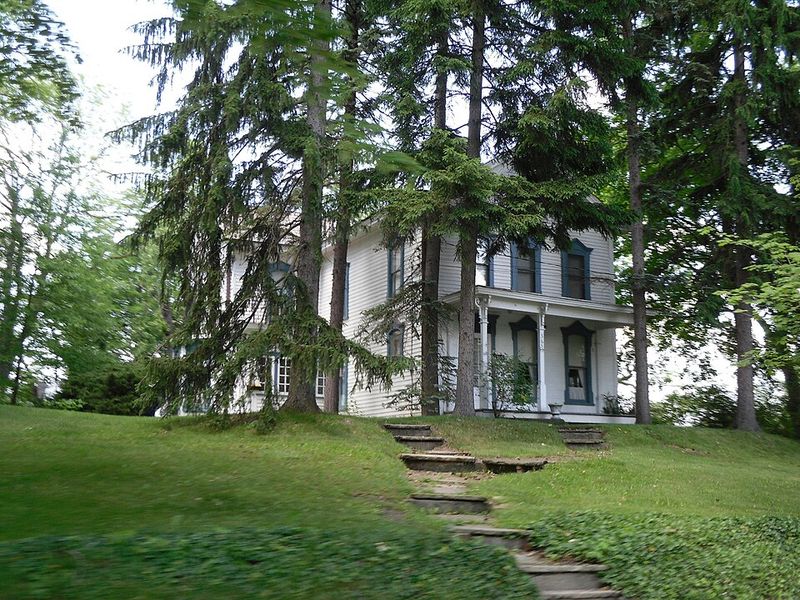Step past the hum of modern life and into places where the day still moves at a buggy’s pace. These Amish towns guard rhythms of work, worship, and neighborly exchange that feel generations removed from our screens. You’ll hear the creak of wagon wheels, smell fresh-cut hay, and see craftsmanship born of patient hands. Ready to slow down and witness a living tradition?
1. Sugarcreek, Ohio
Dubbed the Little Switzerland of Ohio, Sugarcreek blends Amish tradition with Swiss flair. The world’s largest cuckoo clock anchors a main street where buggies routinely clip-clop past chalet-style facades. Stop by cheese houses and bakeries for hand-ladled curds, fry pies, and sturdy loaves cooling on racks. Beyond the storefronts, you’ll find quilt shops and furniture makers emphasizing utility and heirloom quality. Festivals celebrate immigrant roots while honoring quiet, agrarian rhythms. Dawn brings mist over pastures and the scent of hay, while dusk reveals lantern-lit porches. It’s a place where timekeeping feels gentler – even when the clock sings.
2. Arcola, Illinois
Arcola serves as a gateway to one of Illinois’s largest Amish settlements, where rows of corn stretch to the horizon and buggies outnumber buses. Begin at the Illinois Amish Interpretive Center for context on beliefs, work, and worship. Venture to nearby Arthur and country roads where laundry flutters from long lines and farriers shape iron with quiet skill. Quilts hang in muted palettes, reflecting functional beauty. Markets offer noodles, jams, and sturdy baskets woven for daily use. Respectful visitors discover a community that values humility, stewardship, and continuity. Here, the modern rush yields to slower, steadier steps forward.
3. Kishacoquillas Valley (Big Valley), Pennsylvania
Nicknamed Big Valley, Kishacoquillas Valley shelters several distinct Amish affiliations, including the conservative Nebraska Amish. Color-coded buggies reveal subtle identity markers, while farmsteads showcase hand tools, wind power, and careful crop rotation. You’ll notice tidy fencerows, haystacks shaped by scythes, and wash on lines announcing chore rhythms. Country lanes carry a whispering hush, punctuated by hoofbeats and wagon wheels. Local stands sell eggs, produce, and breads that taste like home. Visitors who slow down observe mutual aid at work: barn raisings, shared harvests, and quiet fellowship. It’s a living tapestry of tradition stitched across emerald fields.
4. Shipshewana, Indiana
Shipshewana balances a vibrant market scene with unmistakably Amish rhythms. Expect stalls brimming with quilts, jams, harness leather, and hand-turned wooden toys. Beyond commerce, narrow roads thread past farms where teams plow fields and wash lines sketch lace across the sky. Carriages queue outside hardware stores, and kerosene lamps glow at dusk. Cafés serve chicken and noodles beside towering fruit pies. Come early for auction days, when voices mingle over livestock and antiques. Respectful curiosity rewards the patient traveler – watch for craftsmanship in every dovetail joint and stitched border. Shipshewana invites lingering, learning, and gentle unhurried conversation.
5. Smicksburg, Pennsylvania
Smicksburg’s rolling hills cradle an Amish community known for meticulous craft. Specialty shops feature handwoven baskets, hardwood furniture, and quilts with understated geometry. Country lanes curve toward dairy farms and orchards where labor follows the seasons, not screens. Slow down for a buggy passing, then step inside bakeries scenting the air with cinnamon and molasses. You’ll find jams, preserves, and pottery that echo practical beauty. Respect the pace, and you’ll notice neighborly exchanges and quiet cooperation. In Smicksburg, time narrows to chores, worship, and family – simple anchors that steady life like well-set fence posts.
6. Intercourse, Pennsylvania
In the heart of Lancaster County, Intercourse offers a close look at Amish commerce and custom. Quilters stitch in sunlit rooms, their patterns echoing crops in patchwork fields. Roadside stands sell shoofly pie, whoopie pies, and fresh produce stacked in tidy rows. Buggies clip by as craftsmen plane oak boards into heirloom tables. Workshops hum without wires – belt-driven tools, hand-sawn joints, oil-polished finishes. Respectful visitors find conversation grounded in humility and neighborly care. Early mornings bring dew-silvered pastures and a chorus of roosters. By dusk, oil lamps bloom in windows, marking a day well worked.
7. Berlin, Ohio
Berlin anchors Holmes County, home to one of the nation’s largest Amish populations. Main Street mixes general stores, quilt rooms, and bakeries stacked with fry pies and buttered noodles. A few miles out, hills unfold into neat farms trimmed with white fences, timber barns, and hay wagons. The cadence feels unhurried – sawmills buzz, harness shops clink, and neighbors trade news at produce stands. Furniture makers favor oak and maple, pairing durability with understated design. Visitors who tread gently will glimpse work, worship, and kinship woven together. Berlin invites you to pause, listen, and let the countryside breathe.
8. Pinecraft (Sarasota), Florida
Pinecraft is a seasonal Amish and Mennonite enclave where palm trees meet plain dress. In winter, streets fill with bicycles and three-wheelers rather than buggies, a warm-weather twist on tradition. Cafés dish pies beside Florida citrus, while hymns and community dinners foster fellowship. Without farms, the focus shifts to craftwork, produce markets, and seaside excursions. You’ll hear Pennsylvania Dutch mingling with seabirds and see straw hats against cobalt skies. Respect modesty and privacy, and you’ll be welcomed by smiles and stories. Pinecraft proves old ways can adapt gracefully to new climates without losing their heart.
9. Nappanee, Indiana
Nappanee’s roots run deep in Indiana farmland, where tidy homesteads and carriage houses punctuate the horizon. Explore heritage trails and workshops crafting shaker-style furniture, quilts, and wooden toys. Markets sell noodles, jams, and pickled vegetables in clear mason jars. The rhythm here is measured: milking at dawn, benches carried to Sunday worship, tools sharpened by hand. You’ll find barns painted in honest reds and gardens tiered with beans and squash. Buggies share the road with tractors, each acknowledging the other’s place. Visit with patience and curiosity, and Nappanee will reveal a quietly industrious soul.
10. Bird-in-Hand, Pennsylvania
Bird-in-Hand captures Lancaster County’s agrarian poetry in motion. Produce stands brim with sweet corn, heirloom tomatoes, and jars of chow-chow. Quilts unfurl like painted fields, stitched in quiet rooms where conversation flows softly. Buggies traverse narrow lanes between dairy barns and silos. You’ll find bakeries perfuming the air with shoofly pie and sticky buns. Tours explain faith, schooling, and mutual aid, but the fields tell their own story of steady labor. Visit early for sunrise over fog-washed pastures – a gentle reminder that simple can be deeply abundant.
11. Harmony, Minnesota
Harmony’s Amish community flourishes amid southeastern Minnesota’s rolling bluffs and fertile soils. Country lanes lead to workshops where oak furniture gleams under hand-rubbed finishes. Summer brings roadside stands offering maple syrup, honey, and rhubarb pies. Expect modest signage, friendly nods, and a cadence set by chores rather than clocks. In fields, teams work rows with deliberate care, while wash lines snap crisply in prairie winds. Respect boundaries; many homes welcome commerce but value privacy. Harmony lives up to its name – quiet cooperation, honest labor, and landscapes that seem to pause the century’s whirl.
12. New Wilmington, Pennsylvania
New Wilmington hosts a distinctive Amish settlement recognizable by yellow-topped buggies. Gentle hills cradle dairy herds, cornfields, and tidy gardens bordered by pickets. Shops sell quilts, candles, and pantry staples made for daily use rather than display. You’ll see schoolhouses with playground swings and hear the steady rhythm of hoofbeats on back roads. Markets favor seasonal abundance – cabbages, apples, and jars of beets lining wooden shelves. Evenings settle with lantern glow and neighborly visits. Travelers who speak softly and move slowly will find a community content to keep its own time, beautifully unmodern and fiercely rooted.
